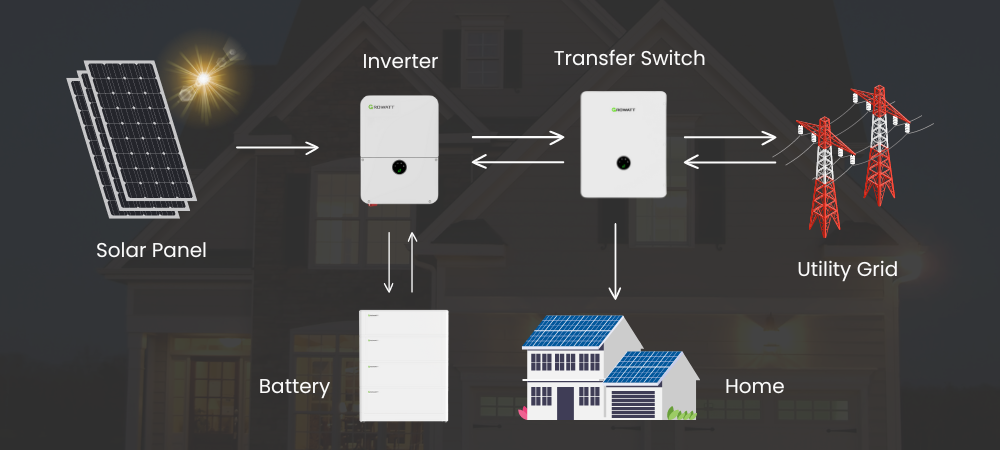Each winter in Montreal unfolds a picturesque landscape of snow, but it also brings with it a recurring challenge: the threat of power outages due to severe weather conditions. The recent snowstorm in Quebec, which plunged over 100,000 Hydro-Québec customers into darkness, is a testament to this annual struggle. These storms often carry heavy, water-laden snow that strains trees and power lines, leading to widespread electricity disruptions. Regions like the Eastern Townships, Montérégie, Montreal, Quebec City, and the Outaouais are particularly vulnerable. Such events not only inconvenience residents but also expose the fragility of our electrical grid under the harsh winter conditions typical of Quebec. This scenario underscores the increasing importance of reliable and sustainable home energy solutions, such as home battery backup systems, to maintain power stability during these unpredictable winter months.
A home battery backup system is an innovative solution designed to provide reliable energy during power outages or peak demand periods. This system plays a critical role in ensuring uninterrupted power supply, particularly useful in areas prone to frequent power disruptions. The operation and components of a home battery backup system include:

The system operates in a continuous cycle to ensure efficient energy management:
When considering the adoption of a home battery backup system, it’s essential to evaluate both the financial implications and practical aspects.
The cost of home battery backup systems in Canada varies based on several factors, including the size of the system, battery type, and power requirements. Generally, in North America, the cost ranges from several thousand to tens of thousands of dollars. Lithium batteries, commonly used in these systems, cost between $800 and $1000 per kilowatt-hour of storage capacity, with the price per unit decreasing for larger batteries. Other cost factors include inverters, which range from a few hundred to several thousand dollars, and charge controllers, priced between a few hundred and over $1,000. Installation costs vary depending on the system’s complexity and the installation location.
Despite the upfront investment, home battery systems offer long-term cost savings:
When selecting a home battery backup system, consider the following:
The installation process, typically handled by professionals, involves integrating the battery with existing electrical and solar systems. Once operational, these systems require minimal intervention, automatically charging and switching to battery power as needed. Maintenance is generally low, with occasional system checks and software updates.
As winter in Montreal brings its unique challenges, including frequent and severe power outages, the value of reliable and sustainable home energy solutions becomes paramount. Home battery backup systems emerge as a practical and eco-friendly choice, providing uninterrupted power, reduced energy bills, increased property value, greater energy independence, silent operation, and low maintenance. These systems are not just a response to the immediate challenges of winter outages but also a step towards a greener and more resilient future.
For those in Montreal and beyond looking to enhance their home’s energy resilience against winter’s unpredictability, Domolynx offers comprehensive home battery storage solutions. Our focus on quality and reliability, backed by partnerships with reputable industry brands, ensures that you get the best in home energy management. Get your free, no-obligation quote by filling out our online form today.
Take the first step towards sustainable and efficient energy use with Domolynx. Request your free, no-obligation quote today and discover how solar energy can transform your home or business.




